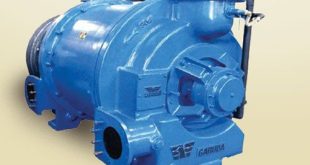two stage roots blower
A two-stage Roots blower is a type of positive displacement blower that uses two sets of rotors (lobes) in series to increase pressure or vacuum in a system. It’s essentially two single-stage Roots blowers working in tandem to achieve a higher pressure or vacuum than a single stage could produce.
Here’s a more detailed breakdown:
-
Series Configuration:Two Roots blowers are connected in series, meaning the discharge of the first blower feeds into the intake of the second.
-
Rotor Design:Each stage typically uses two lobes (rotors) that rotate within a housing, trapping and transferring air or gas without direct contact between the lobes or the housing.
-
Working Principle:As the lobes rotate, they trap a fixed volume of air and move it from the inlet to the outlet. The first stage provides an initial compression, and the second stage further compresses the air or gas, resulting in a higher overall pressure.
-
Applications:Two-stage Roots blowers are used in various applications requiring higher pressure or vacuum levels, such as wastewater treatment, pneumatic conveying, and industrial processes.
-
Cooling:Some two-stage blowers incorporate a cooling system between the stages to manage heat generated during compression, ensuring the second stage operates within safe temperature limits.
